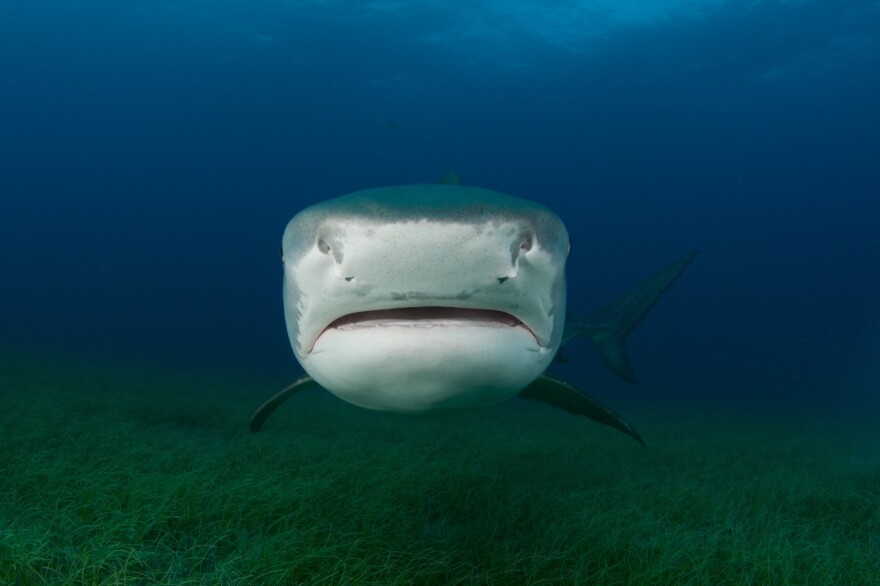Every other Friday on Morning Edition, the Outside/In team answers a question from a listener about the natural world. This week, we’re following up on this inquiry from someone on Instagram: “What are shark noses for? How do they work underwater? How does smell work underwater?”
Smell actually carries underwater because water is a fluid. Air is also a fluid medium. Water currents transport odors the same way air currents do.
Say you’re walking along and you smell smoke. You might not see it, but you have some sense if it's near or far, and you might be able to follow that smell right to the source. You might even be able to tell if it’s a hamburger or just some wood burning.
Sharks do the same thing, though they have different physiology, according to Stephen Kajiura, professor and head of the Shark Lab at Florida Atlantic University.
“They do have little nostrils,” Kajiura says. “They're on either side of the head on the ventral surface, on the bottom side of the head or on the front of the head, and they’re like little holes.”
Sharks have to keep moving their whole lives, pushing the water through their mouths to the gills. The water is also going in those little holes, or nostrils, called the incurrent nares. Water then flows over their olfactory organ, giving a constant flow of information to the brain. Water exits out of a nearby hole, the excurrent nares. However, the olfactory system of a shark is not connected to their mouth or gills.
Kajiura says the flow of water over the olfactory organ “allows them to detect whether something smells good, something smells bad, or warns them that perhaps this is not a good environment.”
Remember how you can use your nose to follow the smell of a barbecue?
Sharks do the same thing in the water. They can even use their nostrils for direction. Since they are on either side of their heads, a smell coming from the left, for example, will hit their left nostril first.

Submit your question about the natural world! If you’d like to submit a question to the Outside/In team, you can record it as a voice memo on your smartphone and send it to outsidein@nhpr.org. You can also leave a message on our hotline, 1-844-GO-OTTER. Outside/In is a podcast! Subscribe wherever you get yours.
“If they have their nostrils spaced far apart like a hammerhead shark, for example, with a nostril spaced on either side of this big giant head,” says Kajiura. “That might give them better directional sensitivity. Or if they're swimming in a zigzag pattern with this great sense of smell, they can home in on the source of the odor.”
And shark noses are extremely sensitive. Sharks can sense blood or animal smells up to a mile or more away! Their acute sense of smell is crucial in the ocean, which can sometimes be a murky habitat. If they can’t see their prey, they have to rely on some other sense.
The earliest fossil evidence for sharks or their ancestors date to 400 million years ago. They’ve survived a long time in part because they’re so good at detecting odor. Sharks are near the base of the vertebrate branch of the evolutionary tree.
“The ability to detect odors in the water has been important for animals throughout our evolutionary history,” Kajiura says. “And we just transitioned to the point where we're the ones on land smelling odors. We're the unusual ones. We're the ones who've had to adapt to this terrestrial environment when in fact the original odor detectors were aquatic.”
In fact, sharks are sometimes called “swimming noses” because of their incredible sense of smell.







